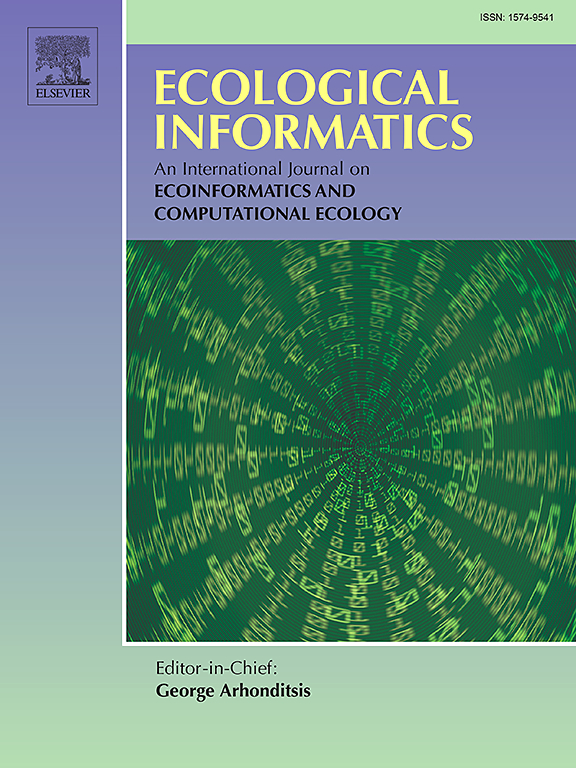基于创新的手工空间特征提取方法和知识蒸馏过程的两阶段芒果叶病检测模型
IF 7.3
2区 环境科学与生态学
Q1 ECOLOGY
引用次数: 0
摘要
许多国家的经济稳定与农业密切相关,作物质量和产量受到天气条件和疾病控制的严重影响。不可预测的气候模式和植物病害仍然是主要挑战,强调需要更可靠的病害检测方法。传统上,植物病害鉴定依赖于目视检查,这种方法往往是不准确的。为了解决这个问题,我们的研究提出了一个两阶段模型来改进芒果叶的疾病检测。在第一阶段,我们利用局部方向模式(LDP)和局部方向模式方差(LDPv)在一个包含4000张图像的综合数据集MangoLeafBD上实现了一种创新的基于块的特征提取技术,在检测精度、灵敏度、特异性和假阴性率方面取得了令人满意的结果。在第二阶段,我们引入了知识蒸馏(Knowledge Distillation, KD)过程,通过将知识从较大的教师模型转移到较小的学生模型来进一步提高模型的性能。我们的研究结果显示了显著的进步,kd增强模型对炭疽病的检测准确率从89.2%提高到95.6%,灵敏度从7.8%提高到4.1%,特异性从71.2%提高到88.9%。在检测其他疾病方面也观察到类似的改进,使我们的方法成为芒果植物疾病检测的更强大和有效的解决方案。本文章由计算机程序翻译,如有差异,请以英文原文为准。
A two-stage model for enhanced mango leaf disease detection using an innovative handcrafted spatial feature extraction method and knowledge distillation process
The economic stability of many countries is closely tied to agriculture, where crop quality and yield are heavily affected by weather conditions and disease control. Unpredictable climate patterns and plant diseases remain major challenges, emphasizing the need for more reliable disease detection methods. Traditionally, plant disease identification has relied on visual examination, a method that is often inaccurate. To address this, our study proposes a two-stage model for improved disease detection in mango leaves. In the first stage, we implement an innovative, block-based feature extraction technique using Local Directional Patterns (LDP) and Local Directional Pattern variance (LDPv) on a comprehensive dataset, MangoLeafBD, consisting of 4000 images, achieving satisfactory results in terms of detection accuracy, sensitivity, specificity, and false negative rate. In the second stage, we introduce a Knowledge Distillation (KD) process to further enhance model performance by transferring knowledge from a larger teacher model to a smaller student model. Our results demonstrate significant advancement, with the KD-enhanced model achieving an improvement in detection accuracy from 89.2% to 95.6%, sensitivity from 7.8% to 4.1%, and specificity from 71.2% to 88.9% for Anthracnose disease. Similar improvements were observed in detecting other diseases, making our approach a more robust and efficient solution for mango plant disease detection.
求助全文
通过发布文献求助,成功后即可免费获取论文全文。
去求助
来源期刊

Ecological Informatics
环境科学-生态学
CiteScore
8.30
自引率
11.80%
发文量
346
审稿时长
46 days
期刊介绍:
The journal Ecological Informatics is devoted to the publication of high quality, peer-reviewed articles on all aspects of computational ecology, data science and biogeography. The scope of the journal takes into account the data-intensive nature of ecology, the growing capacity of information technology to access, harness and leverage complex data as well as the critical need for informing sustainable management in view of global environmental and climate change.
The nature of the journal is interdisciplinary at the crossover between ecology and informatics. It focuses on novel concepts and techniques for image- and genome-based monitoring and interpretation, sensor- and multimedia-based data acquisition, internet-based data archiving and sharing, data assimilation, modelling and prediction of ecological data.
 求助内容:
求助内容: 应助结果提醒方式:
应助结果提醒方式:


